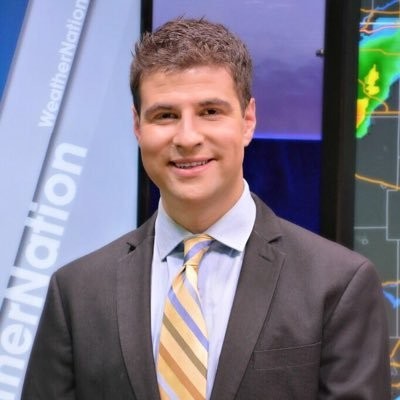Denver received only 8.53 inches of precipitation (rain and snow-equivalent rainfall) in 2018, making it the sixth-driest year in the city's recorded history. That's a striking number for a bunch of reasons, but the main one is that it's less than 60 percent of Denver's average annual precipitation of 14.30 inches.
Here's another way to think about it: Denver saw less rain in 2018 than true desert climates like Phoenix and Tucson, and Denver saw a rain total closer to America's driest major city, Las Vegas (4.19 inches) than our average annual rainfall. Denver saw about 12 percent of Atlanta's annual precipitation, 13 percent of New York's and 17 percent of Chicago's.
This is not good news, but there are a few asterisks to these stats we should explain.
Denver's "official" rain numbers have been taken at Denver International Airport since only 2008. From 1950 through 2007, those observations were taken at Stapleton Airport, and before that (1882 through 1949), they were taken at two downtown locations.
Sure, the official numbers are bad, but they're also for DIA, which is basically in Kansas.
Okay, not really, but DIA is far enough away from downtown Denver (about 25 miles) that it does make a difference, especially when you factor in Denver's hyper-localized climatology. There is an observation site at the old Stapleton Airport, and it received 11.62 inches of rain in 2018. That's still pretty bad, but notably better than the paltry 8.53 inches DIA says we got.

It was a tough year rain and snow-wise in Denver. The black line is 2018, the yellow is average.
Jared Rennie / ArcGIS
Why did 2018 lean on the drier side? When you're measuring a full year's worth of moisture, there are several factors to consider, but one thing stands out: an exceptionally dry late spring and summer, which is usually Denver's wettest season. Summer storms usually help soak the ground. Droughts are often exacerbated by a positive-feedback loop, meaning dry soils and a lack of moisture in the air can suppress future rain and snow chances.
There was also a striking lack of snowfall in Denver for the second consecutive winter. DIA and Stapleton recorded less than half of Denver's typical annual snowfall of about 57 inches. After the 2016-’17 winter produced the second-lowest snow total in Denver's recorded history, the 25.7 inches DIA registered in 2018 was a slight improvement, amounting to the fifth-lowest snow total in the city's recorded history.
But Colorado, like much of the West, is heavily dependent on the mountains for our drinking water. There are two reasons for this: One, Colorado's mountains receive a lot of snow, which melts into the headwaters for four major river basins (Arkansas, Colorado, Platte and Rio Grande) that supply water for parts of seventeen states. The second and main reason is that Colorado's mountains receive way more rainfall than the plains, with some of the state's hills averaging more than fifty inches of moisture a year. And just about every Colorado spot at or above 10,000 feet averages at least 25 inches of moisture a year — way more than the drier Front Range.
The mountains generally had a sluggish 2017-’18 snow season, but this winter has gotten off to a promising start, with the state right around where it should be in terms of season-to-date snowfall. That translates to more critical water for the river basins. As long as the mountains get their snow, the state will have a fairly healthy water supply, even if Denver and the Front Range are on the drier side. Most of Denver's water comes from the South Platte River watershed, which is currently running above average in terms of snowpack.
As of this week, more than 82 percent of Colorado is officially in a drought, including Denver. Southwest Colorado, which was hard hit by the 416 and Spring Creek wildfires over the summer, is in particularly bad shape, though recent big snows there give locals hope. And thanks to a weak El Niño, long-range outlooks are mostly favorable to Colorado's chances of getting out of our drought, though seasonal forecasts are notoriously tricky and volatile.












